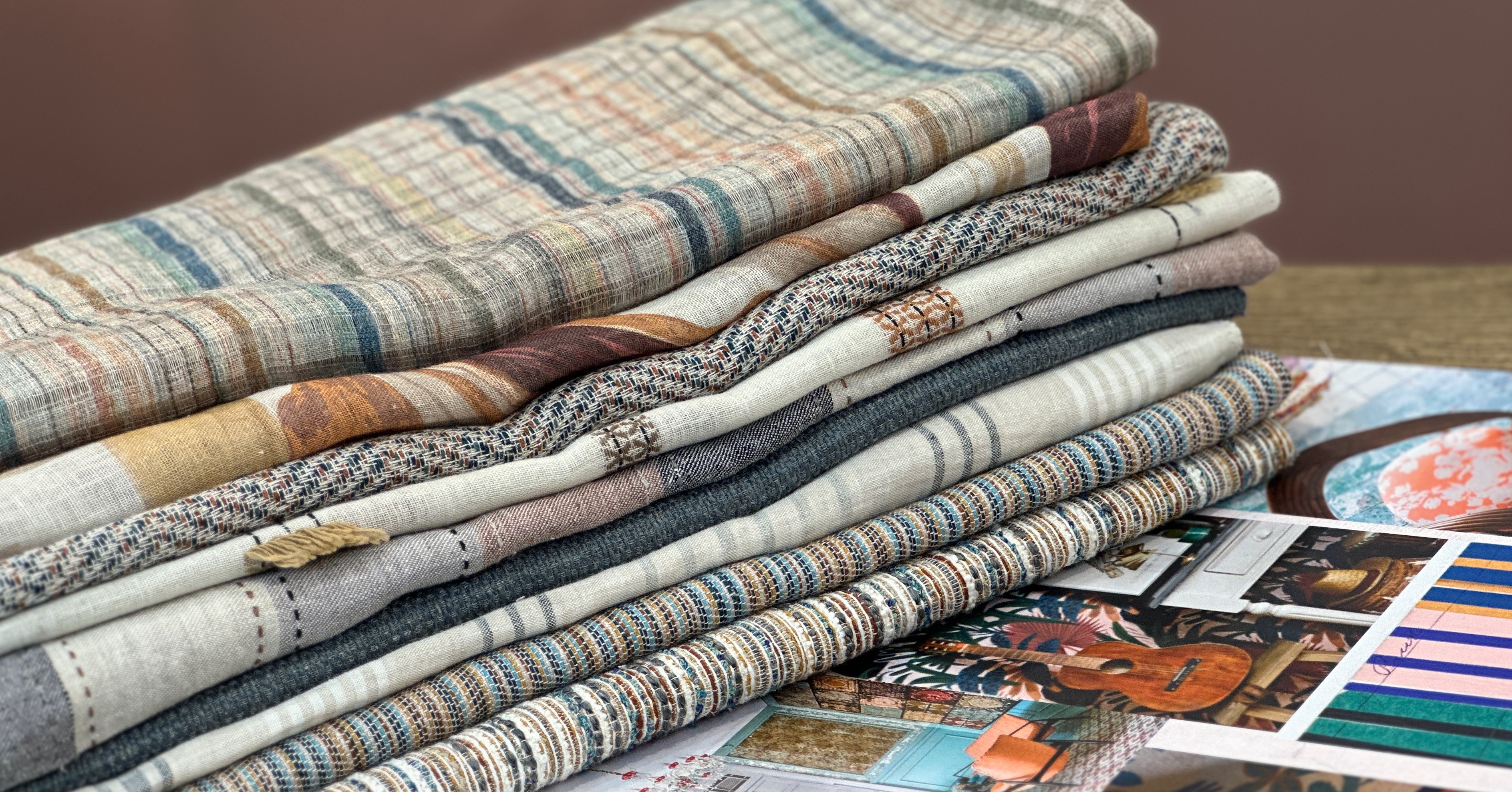
LEARNING OUTCOMES
After successful completion of the course, all students are able to:
- Execute a textile development process in an interdisciplinary group mainly using textile dyeing and printing methods.
After successful completion of the course, student without textile design background is able to:
- Name key tools and practices in the textile design process
- Explain the process of fabric production (knitting and weaving)
- Name environmental and sustainability aspects in the textile design process
After successful completion of the course, student with background in textile design is able to:
- Explain the connections between textile chemistry and textile design, and use them as inspiration in textile design process, especially in the context of textile dyeing and printing.
- Name the benefits of understanding textile chemistry for a textile designer in the context of sustainable design.
Credits: 3
Schedule: 28.04.2023 - 02.06.2023
Teacher in charge (valid for whole curriculum period):
Teacher in charge (applies in this implementation): Hilkka-Maija Fagerlund, Maarit Salolainen
Contact information for the course (applies in this implementation):
Maija Fagerlund hilkka-maija.fagerlund at aalto.fi
Maarit Salolainen maarit.salolainen at aalto.fi
CEFR level (valid for whole curriculum period):
Language of instruction and studies (applies in this implementation):
Teaching language: English. Languages of study attainment: English
CONTENT, ASSESSMENT AND WORKLOAD
Content
valid for whole curriculum period:
The purpose of the course is to introduce students without design background to textile design, and design students to seeing how they can connect the knowledge gained from the textile chemistry minor into their design work. In addition to lectures, the main teaching method of the course is multidisciplinary group work - students with and without design background work together on a design assignment. The following topics will be covered in this course: Tools and practices of textile design process are studied in introductory lectures as well as in the interdisciplinary group work, especially in the context of printed fabrics. Principles of fabric making technologies (weaving and knitting) are studied in introductory lectures as well as short introduction into environmental and sustainability aspects of textile design process. Some of the lectures are intended only for students without design background, and correspondingly, design students should take more responsibility in the group work. Assignments: Design assignment group work and a short written assignment.
applies in this implementation
The students with a background in textile design do not participate in some of the lectures (3h), and use this time to proceed with the assignment, executing their team's concepts in the textile studios (e.g. weaving or knitting print bases). All team members are expected to guide and help each other in areas familiar to them.
Assessment Methods and Criteria
valid for whole curriculum period:
The final grade for the course is based on student’s attendance and participation in the contact teaching as well as group work and the assignments that the students complete during the course. Students must attend and actively participate in at least 80% of the contact teachings. Introductory session is mandatory.
applies in this implementation
A table with evaluation criteria is shared on the Assignments-page on the MyCourses platform
Workload
valid for whole curriculum period:
Overall workload (3 cr): 81 h. 80% attendance in contact teaching is required.
Contact teaching: 30 h
Independent work: 40 h
Personal reflection: 10 h
Giving course feedback: 1 h
DETAILS
Study Material
applies in this implementation
Leppisaari, Anna-Mari (2022) Searching for the Final Hand and Look in Salolainen, Maarit Interwoven- Exploring Materials and Structures. Espoo: Aalto Arts BooksSalolainen, Maarit (2022) Interwoven- Exploring Materials and Structures. p.27-39.Pellonpää-Forss, Maija (2018) Contemporary Colour Methods, Dyeing, painting, screen & digital printing. Espoo: Aalto Arts Books
Niinimäki, Kirsi, ed. (2018) Sustainable Fashion in a Circular Economy. Espoo: Aalto ARTS Books.
Substitutes for Courses
valid for whole curriculum period:
Prerequisites
valid for whole curriculum period:
SDG: Sustainable Development Goals
12 Responsible Production and Consumption
FURTHER INFORMATION
Further Information
valid for whole curriculum period:
Teaching Language : English
Teaching Period : 2022-2023 Spring V
2023-2024 Spring VEnrollment :
Registration in Sisu. Min. 5, max 16 students. Only for students from Textile Chemistry and Design minor.
Details on the schedule
applies in this implementation
See MyCourses page
